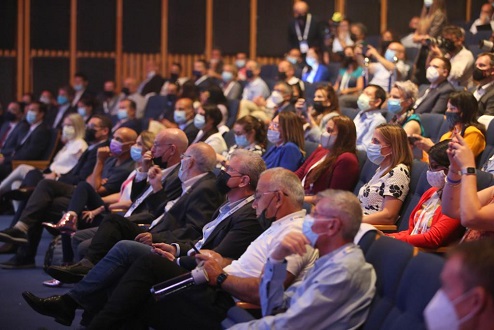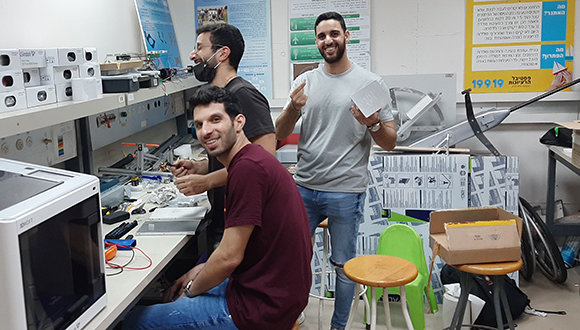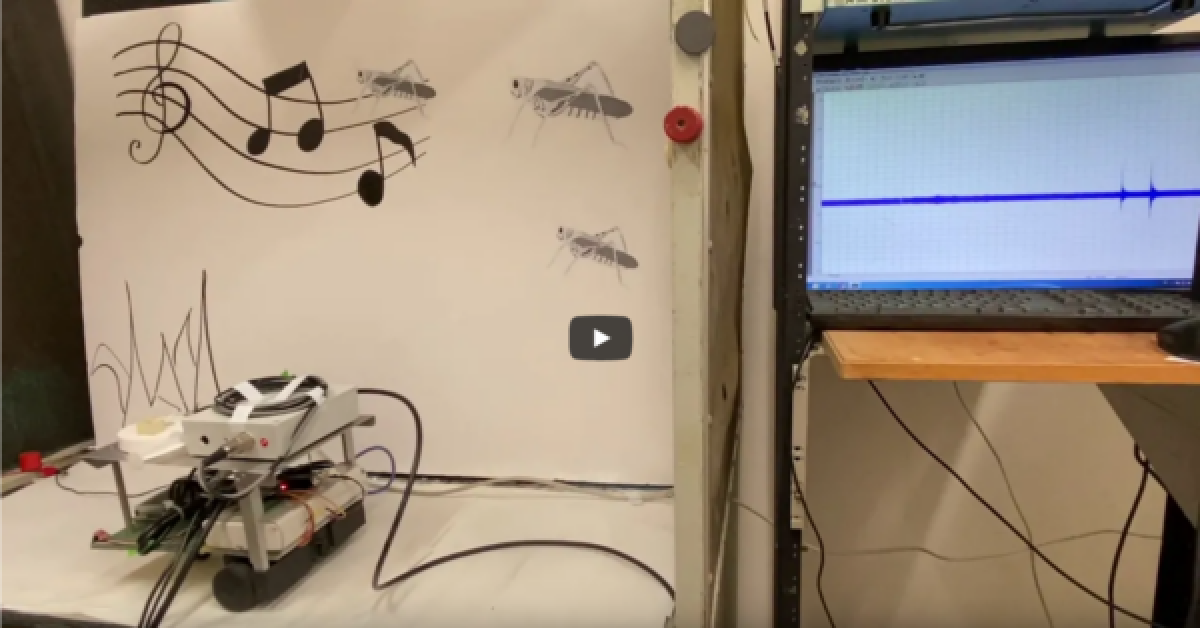AI Week 2022 Draws over 5,000
Three-day virtual event hosted by TAU forecasts an exciting future in artificial intelligence.
Israel’s leading AI Week was recently organized by Tel Aviv University and covered breakthroughs and innovations in AI, as well as its application in business strategy, policy, and future development, gathering a whopping 5,000 AI practitioners and data scientists from 75 countries. TAU’s third AI Week occurred in the midst of the industry’s continued growth, as the global AI market is expected to reach a $190.61 billion market value in 2025, and over 83% of companies reporting AI as a top priority in their business plans.
Industry leaders from companies including Intel, Google, PayPal and Facebook, as well as renowned professors from global universities such as Tel Aviv University, MIT and New York University, gathered for this year’s AI Week Conference, and shared new insights and practices across the world of artificial intelligence. Government representatives from Israel, the UK, Spain and Singapore were also present and shared their strategies towards strengthening the AI ecosystems in their respective countries.
The event was organized by TAU’s Blavatnik Interdisciplinary Cyber Research Center (ICRC), the Yuval Ne’eman Workshop for Science, Technology and Security and the TAD – Center for Artificial Intelligence and Data Science. It was co-founded with Intel and is supported by the Israeli Innovation Authority.
Projected Growth Across Industries
The conference speakers shared their expertise in natural language processing (NLP) and deep learning, as well as the latest developments in AI across industries, ranging from health and medicine to transportation.
The projected growth of AI field was an essential consideration across the board for the various industries.
Jack Hidary, Head of Sandbox, for instance, delivered the opening keynote on AI in the quantum age, followed by two additional keynotes – Prof. Lior Wolf (Computer Science and TAD’s management) on Explainable AI and Dr. Amitai Armon (Intel) on AI Innovations and their Intel Applications.
The event included a special joint session by TAD center and Google as part of the AI4Good collaborative initiative, focused on health. Dr. Debby Cohen (Senior Research Scientist, Google) and Dr. Shiri Stempler (Director of Collaborative Research, TAD) moderated the session, which included speakers from both TAD and Google, showcasing advances in the fields of AI and Health.
AI Week’s Chairman, Maj. Gen. (Ret.) Prof. Isaac Ben-Israel, who is also Co-Head of Israel’s AI Initiative and Director of TAU’s Blavatnik Interdisciplinary Cyber Research Center (ICRC), shared his view that AI will be the dominant technology for the next five-ten years and said “Israel is capable of being one of the global hubs for AI technology, as we are for cyber technology.”
AI Considerations Across the Map
Carme Artigas, Secretary of State for Digitalization and Artificial Intelligence of Spain, said AI should be considered as a driver for change, and stressed the need to place it at the center of a smarter and more inclusive model. She referred to AI as a driver of economic recovery after the pandemic, and said Spain’s strategy aims are to develop academic and scientific excellence in the field of AI. She believes this should happen by implementing AI into the existing value chain and model and that it must be developed by a human-centered approach.
Sana Kharengani, Head of UK Office for Artificial Intelligence, noted that public perception is a huge barrier to implementing AI tech in society, and that technical standards and institutions are key. She highlighted the need for new and clear standards and regulations for AI, which she said will “improve our perception of these technologies and mitigate any new risks without stifling innovation.” Kharengani mentioned the UK’s algorithm transparency standard for the public sector as a prime example.
Brig General, Aviad Dagan, Head of Israel Defense Forces’ Digital Transformation discussed the great strides Israel Defense Forces is taking towards AI and Data Strategy in a world where winning wars in a world where fighting is no longer just about physical weapons.













 Prof. Amir Globerson (Photo: Moshe Bedarshi)
Prof. Amir Globerson (Photo: Moshe Bedarshi)
 Dead Sea scrolls (Photo: Shai Halevi)
Dead Sea scrolls (Photo: Shai Halevi)
 Prof. Niva Elkin-Koren (Photo: Moshe Bedarshi)
Shomron says the same is true in his field of medicine; as society evolves, he says, TAU researchers must continue to study and find ways to respond to emerging challenges. “Our world is changing all the time so we’re always looking at the next frontier,” he says. “That is what we do in academia: We try to invent the future.”
By Judith Sudilovsky
Featured image: Prof. Noam Shomron (right) discusses test results with MDPhD candidate Yazeed Zoabi (left) and doctoral candidate Meitar Grad in his medical genomics lab. (Photo: Yoram Reshef)
Prof. Niva Elkin-Koren (Photo: Moshe Bedarshi)
Shomron says the same is true in his field of medicine; as society evolves, he says, TAU researchers must continue to study and find ways to respond to emerging challenges. “Our world is changing all the time so we’re always looking at the next frontier,” he says. “That is what we do in academia: We try to invent the future.”
By Judith Sudilovsky
Featured image: Prof. Noam Shomron (right) discusses test results with MDPhD candidate Yazeed Zoabi (left) and doctoral candidate Meitar Grad in his medical genomics lab. (Photo: Yoram Reshef)


 Prof. Yossi Matias, Prof. Ariel Porat, Prof. Meir Feder & Prof. Tova Milo580.jpg) Left to right: Prof. Yossi Matias, Prof. Ariel Porat, Prof. Meir Feder & Prof. Tova Milo
The joint venture will include a joint seminar on Machine Learning (ML), led by TAD Director Dr. Shimon (Moni) Shahar and Dr. Deborah Cohen, a scientist at the new Google Center in Israel.
Prof. Meir Feder emphasized that “the AI revolution is expected to impact every aspect of our lives, from drug development and data-based personalized medicine, to defense systems, financial systems, scientific discoveries, robotics, autonomous systems and social issues. In addition, it is very important to train human capital in this area, and therefore the Center will provide every student at TAU with a basic AI education. TAU is special in having researchers who specialize in basic science and AI, as well as researchers who apply AI in the humanities and social sciences. We are happy that Google has decided to join forces with TAU in this important matter. The collaboration with Google will enable utilization of the power of AI and Data Science, channeling it toward the benefit of society.”
Left to right: Prof. Yossi Matias, Prof. Ariel Porat, Prof. Meir Feder & Prof. Tova Milo
The joint venture will include a joint seminar on Machine Learning (ML), led by TAD Director Dr. Shimon (Moni) Shahar and Dr. Deborah Cohen, a scientist at the new Google Center in Israel.
Prof. Meir Feder emphasized that “the AI revolution is expected to impact every aspect of our lives, from drug development and data-based personalized medicine, to defense systems, financial systems, scientific discoveries, robotics, autonomous systems and social issues. In addition, it is very important to train human capital in this area, and therefore the Center will provide every student at TAU with a basic AI education. TAU is special in having researchers who specialize in basic science and AI, as well as researchers who apply AI in the humanities and social sciences. We are happy that Google has decided to join forces with TAU in this important matter. The collaboration with Google will enable utilization of the power of AI and Data Science, channeling it toward the benefit of society.”

